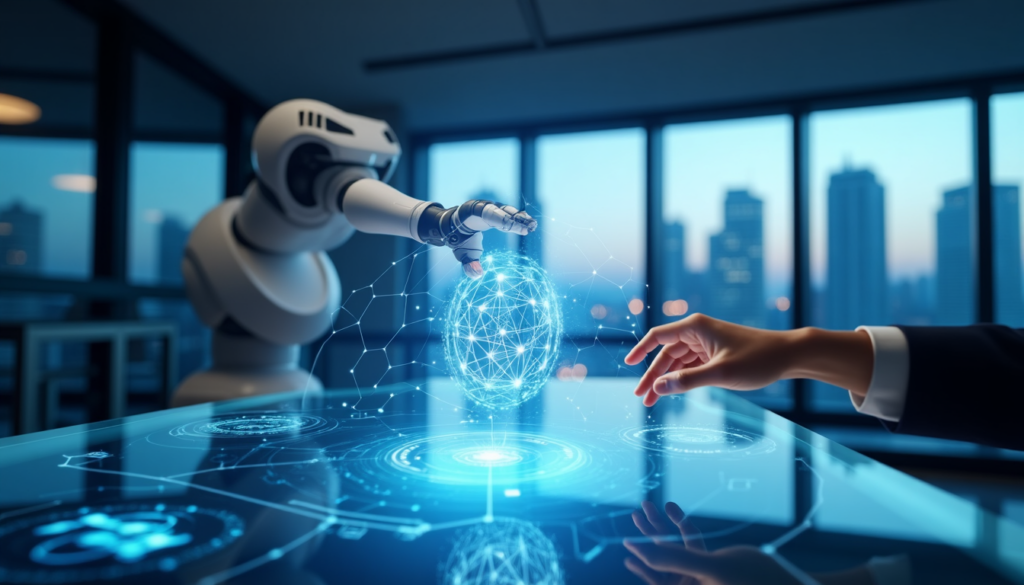
Nowadays, artificial intelligence (AI) is not a sci-fi idea. It has the potential to become a fundamental component of public sector operations by 2025, revolutionizing the way agencies make choices and interact with their constituents. Government organizations can increase productivity, make better decisions, and offer citizens better services by taking the lead in AI-powered innovation.
50% of agencies reported high levels of AI maturity, which correlates to mature behaviors like embracing an innovation culture and piloting generative AI use cases to drive mission impact, according to a recent Google-commissioned IDC study that polled 161 federal Chief AI Officers and other AI decision makers. Let’s examine five AI trends that we think will influence the public sector in the upcoming year.
Trend #1: Multimodal AI: Unleashing the power of context
Imagine a future in which artificial intelligence (AI) is able to comprehend and evaluate data from a variety of sources, including text, photos, videos, and even speech. This is multimodal AI’s power. The adoption of AI will be crucial this year, mostly due to multimodal learning and the contextual awareness it makes possible. In order to enhance decision-making, anticipate climate-related dangers, and upgrade public infrastructure, multimodal AI will eventually allow agencies to evaluate data at the municipal and state levels and integrate it with data from other sources, such as Google Earth Engine, Google Maps, Waze, and public data sets.
The Hawaii Department of Transportation (HDOT) is better equipped to tackle climate issues thanks to Google AI. They may prioritize investments and evaluate risk by utilizing Google Earth Engine and Google Cloud to implement a Climate Resilience Platform.
Trend #2: AI agents: The evolution from chatbots to multi-agent systems
Simple chatbots of the past have given way to advanced AI agents of the future that can manage the trickiest jobs. These agents have the ability to plan, reason, and even pick up knowledge from their interactions. Government workers will be able to work and code more effectively in the future, manage their apps, obtain deeper insights from data, recognize and address security issues, and realize their finest ideas with the aid of AI agents.
Google AI-powered virtual agents are being used in Sullivan County, New York, to serve more residents more quickly, day or night. Sullivan County came up with a system that helps citizens outside of regular business hours while allowing government employees to concentrate on important tasks despite having a small workforce and budget.
Trend #3: Assistive search: The next frontier for knowledge work
Artificial Intelligence is already changing how we obtain and comprehend information. Governments can increase the precision and effectiveness of scanning large datasets with generative AI. Agencies can increase the value and accessibility of their data by investing in automated metadata tools, semantic search, and sophisticated document transcription.
From materials science and bioinformatics to human performance enhancement, the Air Force Research Laboratory (AFRL) is utilizing Google Cloud’s state-of-the-art artificial intelligence (AI) and machine learning (ML) capabilities to address challenging problems in a variety of fields. To further its objective of creating and transferring cutting-edge technology to the air, space, and cyberspace forces, AFRL is utilizing AI and cloud computing.
Trend #4: AI-powered constituent experience: seamless and personalized
AI will contribute to bettering citizen experiences by 2025. By allowing citizens to swiftly and simply explore government websites and services—like applying for permits and licenses—offered in many languages and available around-the-clock, AI-powered tools and technology can promote tighter citizen-government connections and increase confidence.
The Wisconsin Department of Workforce Development (DWD) was able to expedite overall response times and scale the state’s response to unemployment insurance claims by collaborating with Google AI. In order to administer the UI program to Wisconsinites in need of financial aid in an honest manner, they were also effective in weeding out bogus claims.
Trend #5: Security gets tighter— and tougher— with AI
The dangers posed by AI are growing in frequency. But AI can also be a very effective tool for improving security. AI can assist in safeguarding sensitive data and government systems by automating threat detection, evaluating enormous volumes of data, and swiftly responding to problems. Agencies must give security first priority as AI pervades government and citizen services more and more in order to counter risks like disinformation and deepfakes.
Every week, 90 billion cyberattacks target New York City. We must reduce those 90 billion occurrences to no more than 50 or 60 items. Without a great deal of artificial intelligence and automated decision-making capabilities, we couldn’t accomplish that.” New York City’s Chief Technology Officer, Matthew Fraser.
The opportunity ahead
AI is already generating a lot of excitement among public sector organizations around the nation, which are utilizing it to boost productivity, improve decision-making, and better serve their clients. In the future, we anticipate that agencies will select and fund AI leaders who strengthen AI governance, foster public confidence, and make investments in a workforce strategy that prioritizes AI and security. For AI to be developed and implemented responsibly and securely at all governmental levels, this will be essential.
